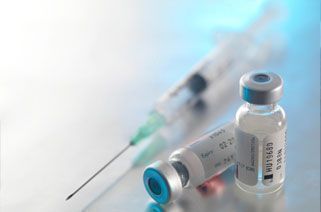
Fear of Diabetes The Risk Decreases with 150 Minutes of Sports in Week
Fear of Diabetes? The risk decreases with 150 minutes of sports for Week
Conversations of Ordinary Medicine: ‘Doctor What Can I do to Improve My Diabetes’?”Doctor:” She Moves? Walk?”” No, Doctor, “” Well, First of All Start Exercising.”. The Advice is correct but as proposed it will have no effect. The New Trend is to consider exercise as a real therapy to be prescribed, drawing up a real prescription.
The American Diabetes Association Has Also Analyzed a Long Series of Studies Coming to the conclusion that Certain Lifestyle Changes Such As a Healthy and Proper Diet and Regular Physical Activity Are Able To Reduce The Risk of Type II Diabetes by MORE THAN 50 PERVE IN Genetically Predisposed and Therefore High-Risk individuals. Conclusions culminated in an important consensus document, the indications of which came from the Finnish Diabetes Prevention Study that in established the minimum amounts of exercise to prevent the disease: in fact, 150 minutes per week would suffice.
So 30 minutes for five days a week or 50 minutes for three sessions, just never let more than two days pass between workouts. Yet in recent years, the prescription of movement as a tool for diabetes management and control has gone-guiltily-to the back burner, making it the recommendation least followed and maintained over time by patients. The most frequently given reasons for dropping out are: lack of time (40%), fatigue/pigriety, health reasons, lack of facilities, distance.
It should also be said that most of the time it is generic advice from doctors like “…and move more,” subsequent to diet, medications, blood tests. The result is That only 25 percent regularly adhere to the recommended but Never prescribed exercise. Thus in a statement the Villa Valeria Nursing Home in Rome.
‘Exercise carried out on a regular basis, on the other hand, constitutes a valuable indication that must be translated and transferred to the patient correctly- explains Professor Paolo Montera, of the University of Tor Vergata, Endocrinologist and Sports Physician of the Endocrinology, Nutrition and Metabolism Service of the Villa Valeria nursing home in Rome- first of all, there is a substantial difference between activity and exercise where the latter is characterized by a structured and repetitive muscular engagement. Saying ‘you must exercise’ or ‘move more’ is a generic recommendation and also a wasted opportunity. Today Those Involved in the Field of Myodynamic Treatment of Metabolic Diseases Must First Be Able to Motivate the Subject and then Be Able to ‘prescribe’ Exercise by Giving the patient all the tools to put the intention into action, in the way that is mouss congenial and stimulating to him or her. We must then hand them a prescription stating the duration, intensity, type of exercise and the goal to be achieved, which in the case of type II diabetic subjects will be both weight and metabolic, acting both on body weight (about 80% of subjects are overweight/obese) and on altered blood-chemical values, not only glycemic.
This is because during exercise, particularly low-to-medium intensity aerobic exercise, the muscles’ consumption of both glucose and fatty acids, used as fuel, increases.
‘Doctor I walk to the grocery store every morning and take the stairs, avoiding the elevator, can that be okay’?’ We explain to the patient that the prescribed exercise to be effective must be conditioning, that is, it must induce adaptations that improve the subject’s state of ‘fitness’ and therefore it will have to have precise characteristics: the first of these characteristics, for example, is continuity, that is, lack of interruption for at least the first 30 minutes’.
‘The Activity Recognized as Most Effective for Therapeutic Purposes is a Mixed Type, Predominantly Aerobic (i.and., endurance or endurance) but partly anaerobic (i.and., Power or Resistance). Aerobic Activity (Such As Brisk Walking, Jogging, Cycling) Serves to Consume Calories Mainly From Fat and Thus Promotes Weight Loss, is good for the Heart and Improveces Oxygen Transport to the muscles. While Power or Speed Exercises and Sports, from Lifting Weights to Pedaling Uphill Or Running Fast etc. Use Mainly glucose and are useful for Increasing Muscle Volume and Tone, Even At Rest, Thus Raising Basal Energy Expedition.
Both types of exercise however increase the effectiveness of insulin, the loss of which (insulin resistance) is the cause of both visceral adiposity, type II diabetes, and all those alterations we find in the Metabolic Syndrome (Cholesterolemia, Triglyceridemia, Uricemia, Blood Pressure , homocysteinemia). The Greater The Volume of Exercise (i.and., Its Intensity Times Its Duration) The Better The Results Will Be in Terms of ReduCing Weight and Blood Sugar, and Improving Insultin Resistance. It is precise these latter effects that have made physical activity a Formidable Tool Not Only in the Treatment But Also in the Prevention of Type II Diabetes Mellitus, and for this Reason it Should Also Be Regularly performed by Family Members of Diabetic Individuals.
Prescribed and Structured Physical Activity Therefore May Be the First Step To Prevent The Onset of Diabetes in AT-RISK Individuals or to Keep The Disease Under Control Before Resorting to the Use of Medication.
AN EXERCISE OR SPORTS SESSION EXERTS ITS BENEFRIAL EFFECTS ON CIRCULATING GLUCOSE LEVELS (BLOOD GLUCOSE) UP TO 72 HOURS After the End of the Activity. ‘At Least 150 Minutes a Week of Mixed Exercise (70 percent moderate and 30 percent vigorous) Along with a Modestly Hypoglucidic Diet Achieves 5-7 percent weight loss and has been shown to improve glucose tolerance more than a drug such as metformin,’ continues Montera, of Villa Valeria Nursing Home in Rome.
‘Beneficial Effects Are Also Registered on GlYCATED Hemoglobin (HBA1C) Values, The Parameter That indicates The Averal Blood Glucose Values of the Last 90 Days: After 8 Weeks of Exercise, The HBA1C Level decreases in Exercising Subjects Compared to’ Sedentary ‘Ones, Regardless of Weight Loss. When training a Diabetic Subject, it is good to have some caution; One Must First Check His Or Her Fitness, That Is, His or Her Cardiovascular Condition and the Possible Presence of Complications; then it is especialy necessary to allocate the physical activity to be carried out, according to the type of therapy in place (diet, oral hypoglycemic drugs, insulin) and the time of intake or advice of the drug; it is imperative, for example, in the case of therapy with fast-acting insulin, to carry out physical activity only after the end of its effect (on Average three to four hours), as it will alo appropriate appropriate its to return it dosage in The Subsequent Administration, to AVOID The Onset of Dangerous Hypoglycemic Crises. ‘It is a good idea to prescribe exercise, indicating the frequency and duration of workouts, their intensity and type, only after having motivated the patient and indicated short- and long-term goals, and putting him or her in a position to always feel comfortable, in a relaxed, non-competitive and professionally qualified environment; in fact, it is here that the skills of the sports physician and those of the exercise science graduate converge; the former should interface with the referring diabetologist, the latter take care of the correct performance of the exercises.
For Example, The Physician Should Identify the Training Heart Rate According to the Goal, Depending on Whereher One Wants To Achieve significant Weight Loss, or Predominantly Blood Sugar Control, Or Both, and the trainer Should Take Care That the Patient Stays Within This Parameter During During The Session, ‘Continues Montera, of the Villa Valeria Nursing Home in Rome.
‘IT HAS Been Ascertained that the Phenomenon of Abandonment occurs on Average Within the First Three Months, Thereafter the Appreciation of the Benefits Achieved Makes It Much Less Frequet. For A Long Time It was Thought That Power Exercises (Weight Training, Speed, Strength) Could Pose a Risk to the Diabetic Patient, But recent Studies Have Shown That, IF Performed Under Expert Supervision, These Exercises Can Be Done Safely and Indeed Area Complementary to More from Resistance Exercises. The Exercise Program Shound includes Graual Incasse in Workloads So As To Create Those Healthy Adaptations, Both Muscular and Metabolic, That Will Lead To Better Ovellth and a Reduction in the Intake of the Drugs or Units of Insulin Habitually Administed, Something that is, In General, Very Welcome by Patients. We must therefore Consider Exercise As a Real Drug for All Metabolic Diseases, Safe and Effective. On the Other Hand, Even the American College of Sport Medicine, Just Two Years Aug, Highlliged How This Amount of Movement Can Help Prevent and Treat More Than 40 Diseases, From Cardiovascular Diseases To Caners to Depression and Osteoporosis.
In fact, it Should be remembered that the ABSENCE of Movement, Otherwise Known As Sedentariness, is the Fourth Leading Cause of Mortality and Disability in the World and That Italy, in That Respect, Has the Sad Record of Being The Most Sedentry Country in Europe And in School with fever hours of physical education (Coni-Itet Survey 2014) ‘, concludes Montera, of the villa Valeria Nursing Home in Rome.

